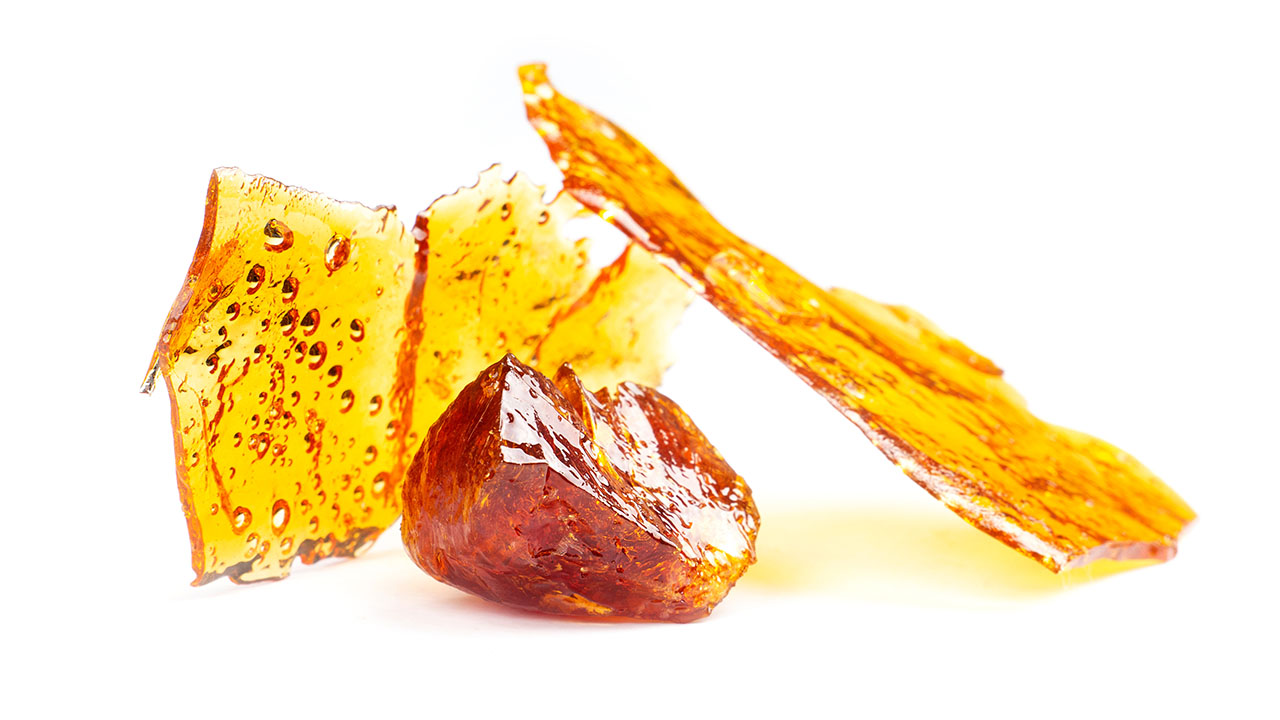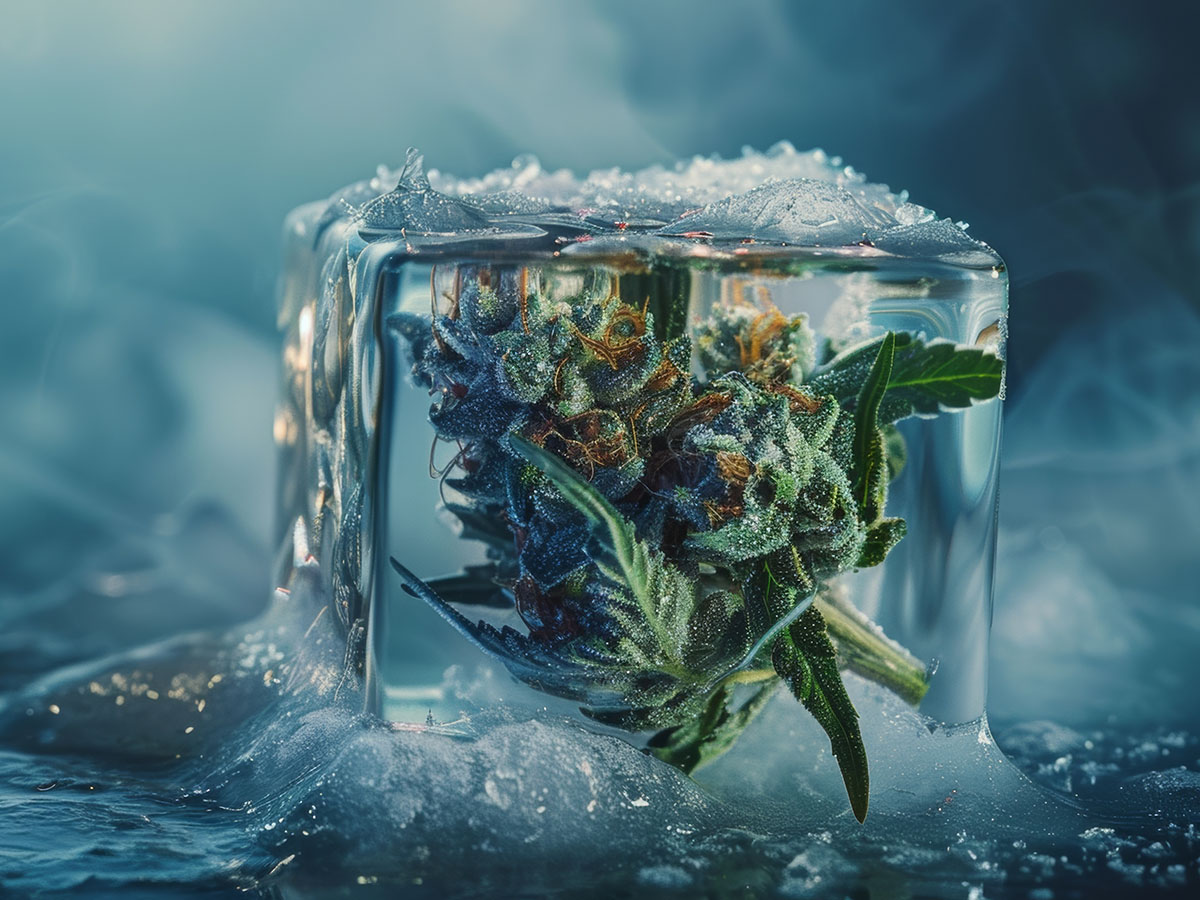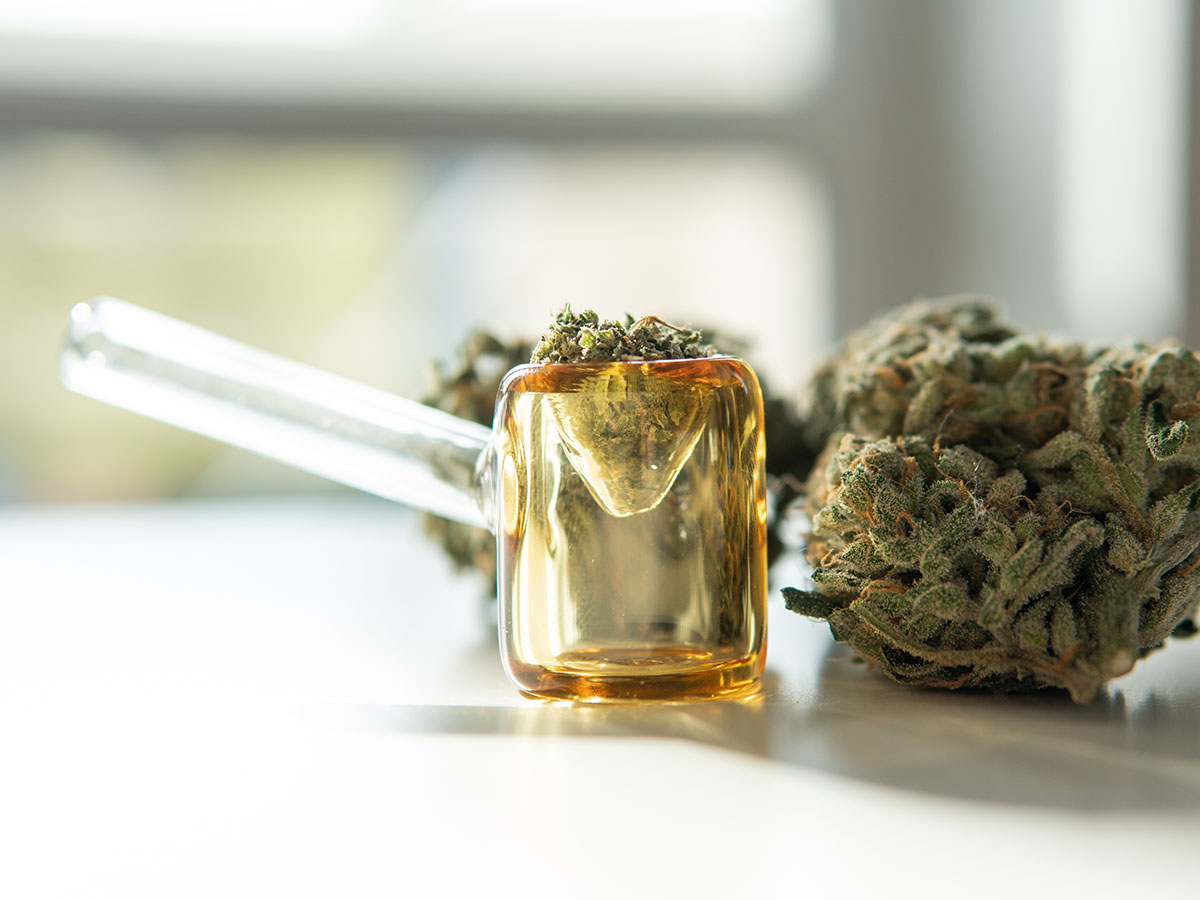
What Are Cannabis Concentrates & How Do You Smoke Them?
June 30, 2024
Cannabis concentrates are flavorful, aromatic products that contain large portions of cannabinoids and terpenes that make them extremely potent. By condensing the trichomes found on the marijuana plant, cultivators can create different forms of concentrates that can be smoked or consumed in a variety of ways.
To put it simply: more of the stuff you like in a smaller (concentrated) form.
What are Cannabis Concentrates & Extracts?
Cannabis concentrates and extracts contain specific cannabinoids and terpenes in greater strength than those that are found in raw marijuana flower or other plant material. These products go by many different names, but often they’re simply referred to as “wax.” (More on that below!)
You may hear the terms “concentrate” and “extract” used interchangeably, but there is a difference. Concentrates refer to any type of concentrated cannabis product, while extracts are concentrates that are created through solvent-based extraction.1
How Strong Are Concentrates?
Concentrates can have between 50% and 90% THC, making them extremely potent. A few concentrates can even reach 99% pure THC, which is why this product is not recommended for cannabis newbies. It’s important to note, however, that higher THC levels don’t necessarily lead to higher levels of intoxication. A study from the University of Colorado at Boulder suggested that smoking concentrates and smoking cannabis flower could provide similar levels of psychoactivity.2 If you choose to purchase concentrates, pay attention to how your body reacts as that can help inform further purchases.
How Are Cannabis Extracts Made?
Manufacturers use two different methods to create cannabis extracts: solventless and solvent-based. Each method creates diverse textures and types of concentrates that can have different properties and uses.1
Solvent-Based Concentrates
Solvent-based concentrates are made using butane (BHO), ethanol, methanol, or CO2 to extract cannabinoids, terpenes, and other compounds from marijuana trichomes.3
Solventless Concentrates
Instead of using chemical solvents, the solventless methods of making concentrates incorporate water, ice, pressure, heat, and physical separation to create the end result of a concentrated product.3
Types of Marijuana Concentrates
Concentrates come in many forms, from soft and buttery extracts to crumbly hash and brittle shatter:
- Wax: Wax is a golden, waxy product that's typically made using a BHO or propane extraction process. Wax is an extract of THC and other cannabinoids made from dried and cured flower buds, sugar leaves, and stems.4
- Shatter: Similar to wax, shatter is also primarily made using a BHO or propane extraction process, but the resulting extract is heated again to produce a hard, transparent golden or yellow sheet that can be shattered and consumed.4
- Crumble: First frozen, then extracted using solvents, crumble looks almost like light brown sugar toffee. Crumble's unique texture comes from melting and whipping shatter, then drying and curing the final product.4
- Sugar: Marijuana sugar looks like wet or damp sugar and can vary in color from light yellow to deep amber. Manufacturers use solvent-based extraction followed by drying to create the sugary appearance and intensely sweet flavors.4
- Budder / Batter: Manufacturers create budder (or batter) by pouring extract into a heat-resistant glass vessel and whipping it as heat is applied. This concentrates the extract and creates a creamy tan or amber product.4
- Diamonds: THC diamonds can contain up to 99% pure THC, making them one of the most potent concentrates. The creation process begins by extracting live resin from cannabis plants, then purifying it through chromatography. After this process, manufacturers slowly heat the refined extract until it forms diamond-like crystals.5
- Live Resin: Live resin is a type of cannabis extract that is made from fresh-frozen cannabis. Manufacturers flash freeze the plants immediately after harvest, then use a solvent extraction process to dissolve the trichomes while leaving behind the active compounds.4
- Rosin: A solvent-free concentrate, rosin can be made from flash frozen or dried cannabis. Rosin usually appears waxier and thicker than resin, and it's made using a solventless ice water extraction method.4
- Bubble Hash: Bubble hash is another solvent-free concentrate that is made by agitating cannabis trichomes with cold water and ice in bubble bags. Frozen trichomes fall off the marijuana flower and are sifted through screens, ultimately creating a soft, crumbly end product, which can range from light blonde to golden yellow.4
How to Consume Concentrates
There are so many concentrates to choose from, but that’s half the battle–now you need to choose how to consume them. Here are some of the most popular ways.1
- Dabbing: When people dab, they heat the concentrate of their choice to the point where it vaporizes. The vapor can then be inhaled using a dab rig, e-rig, or another dabbing device.1
- Vaping: Many dispensaries offer vape cartridges that contain cannabis extracts like live resin. This method is convenient and mess-free as these concentrate cartridges can be used with just about any vape battery.1
- Infused Flower: Consumers can try an infused joint, or can infuse their own marijuana flower by adding a concentrate to a bowl prior to smoking. Another way to consume infused flower is to make your own moon rocks.1
Frequently Asked Questions
Have questions about concentrates? We’ve got answers!
Do concentrates get you more high than flower?
Possibly, but it’s hard to make sweeping generalizations regarding how concentrates impact the body compared to flower. A 2020 study conducted at the University of Colorado, Boulder, found that although concentrates are significantly stronger than marijuana flower, consuming them may not result in a more intense experience.2
What’s the difference between concentrates and flower?
Cannabis flower is the actual flower of the raw plant while concentrates are a concentration of the cannabinoids, terpenes, and flavonoids found inside the plant.6
What’s the difference between concentrates and extracts?
Extracts are a specific type of marijuana concentrate that’s made using solvents. Concentrates can be made using solvents or solvent-free processes.1
More About Cannabis Concentrates
Now that you know more about concentrates and the different types, you can visit your dispensary and your budtender can help find the concentrate that’s right for you.
Sources:
1. "What are cannabis concentrates and how do you consume them?" Weedmaps, March 20, 2023, https://weedmaps.com/learn/products-and-how-to-consume/cannabis-concentrates
2. “Association of Naturalistic Administration of Cannabis Flower and Concentrates With Intoxication and Impairment” JAMA Psychiatry, June 10, 2020, https://jamanetwork.com/journals/jamapsychiatry/fullarticle/2767219?guestAccessKey=3c2f6e78-f462-4f84-9730-6a3d5e97daa0
3. "Cannabis Concentrates 101: A Guide to Terms, Usage, Potency, and Testing," ACS Laboratory, January 23, 2023, https://www.acslab.com/retail/cannabis-concentrates-guide
4. "What is dabbing?" Leafly Cannabis glossary, May 9, 2024, https://www.leafly.com/learn/consume/dabs
5. "THC Diamonds: What Are They, And How Are They Made?" Leafwell, https://leafwell.com/blog/thc-diamonds
6. "What Are the Benefits of Cannabis Concentrates?" Leafwell, March 2024, https://leafwell.com/blog/benefits-cannabis-concentrates
Use of Marijuana Concentrate may lead to: Psychotic symptoms and/or Psychotic disorder (delusions, hallucinations, or difficulty distinguishing reality); Mental Health Symptoms/Problems; Cannabis Hyperemesis Syndrome (CHS) (uncontrolled and repetitive vomiting); Cannabis use disorder/dependence, including physical and psychological dependence. Please consume responsibly. This product may cause impairment and may be habit forming. There may be health risks associated with consumption of this product. State laws impact what dispensaries can and can’t sell to recreational customers and medical marijuana patients. Not every type of product, consumption method, dosage form, or potency mentioned on this blog will be permitted in all locations.


